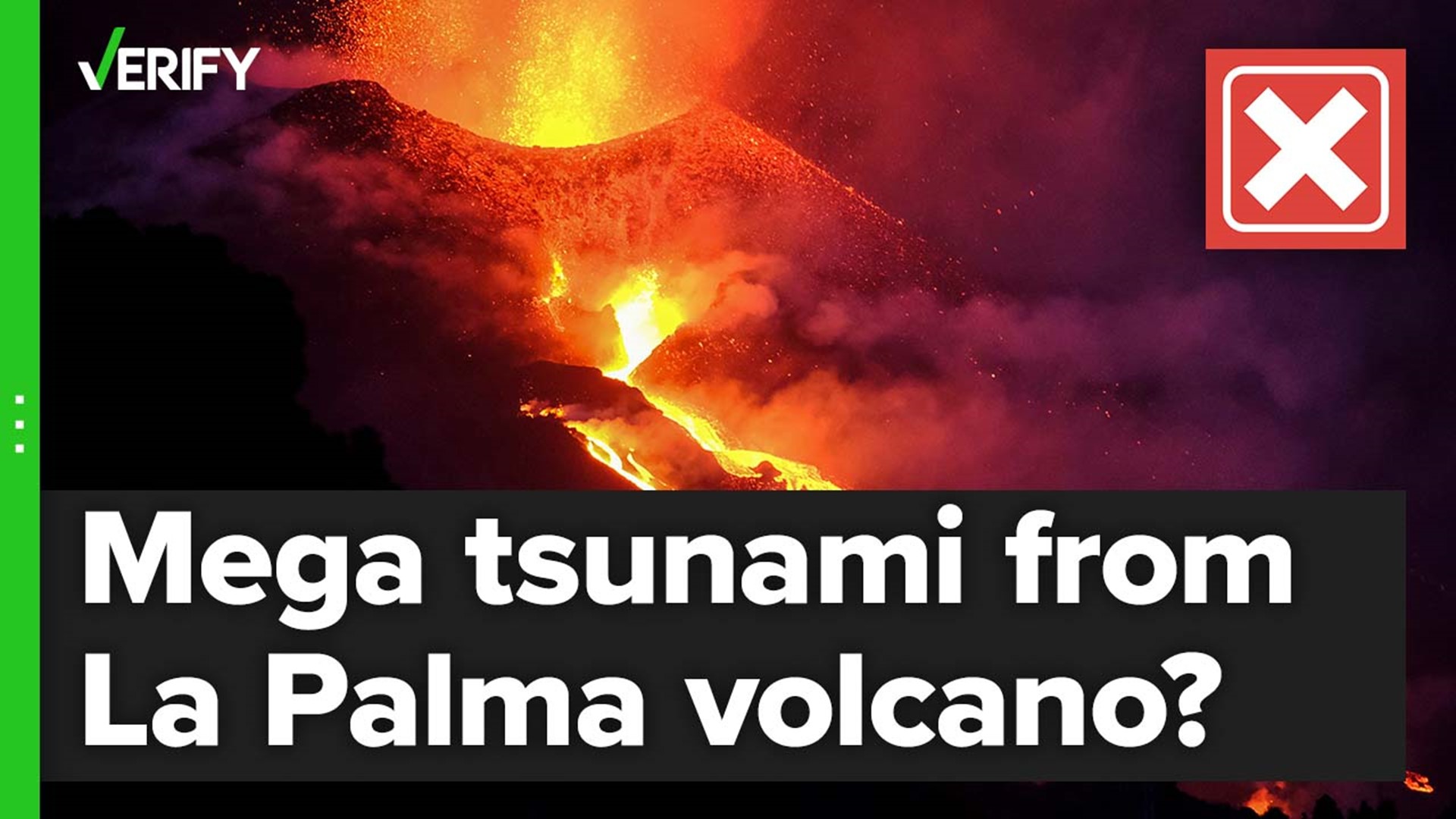The Cumbre Vieja volcano on the island of La Palma in the Canary Islands, a Spanish archipelago located off the coast of northwestern Africa, erupted on Sept. 19.
Since the eruption, conspiracy theories have spread across nearly all major social media platforms about the active volcano. Among those theories: the volcano could cause the island to collapse, which would trigger a mega tsunami that could reach and decimate the East Coast.
Videos posted on YouTube claim a 2009 video game foreshadowed plans for “the elite” to use the volcano to cause the tsunami. The videos have thousands of views and have been shared across the web.
An image showing the purported trajectory of the tsunami has also been shared thousands of times on Facebook and has the Facebook “false information” disclaimer.
THE QUESTION
Is the Cumbre Vieja volcano going to cause a massive island collapse, which would result in a “mega tsunami”?
THE SOURCES
THE ANSWER
No, researchers with the USGS said in a blog post this theory “doesn’t carry water” for many reasons.
WHAT WE FOUND
According to the National Weather Service (NWS), “the potential for a full failure and total collapse of the Cumbre Viejo (CV) and creation of a large, damaging tsunami across the U.S. East Coast is extremely low.”
RMS, a risk management company, reported that Cumbre Viejo currently has the highest rate of magma production than any other volcano in the Canary Islands.
The International Tsunami Information Center (ITIC) confirmed that small landslides do occur during volcanic eruptions, but this volcano “will not send a large part of the island into the ocean.”
“No such event - a mega tsunami - has occurred in either the Atlantic or Pacific oceans in recorded history. NONE,” the ITIC reports. “The U.S. volcano observatory, situated on Kilauea, states that there is no likelihood of that part of the island breaking off into the ocean.”
There are no current threats of a tsunami in the United States, according to the U.S. Tsunami Warning System, which is operated by the NWS and the National Oceanic and Atmospheric Administration (NOAA).
Researchers with the U.S. Geological Survey (USGS) said in a blog post that the Basaltic ocean islands, such as the one in the Canary Islands, do tend to experience catastrophic landslides but only every few thousand years.
“A significant portion of an island is removed during collapse and has the potential to displace tremendous amounts of seawater, generating local tsunami waves that are thought to be over 100 meters (300 feet) high. From this understanding grew a notion that collapsing volcanoes—particularly in the Canary Islands—could generate ocean-wide ‘mega-tsunami,’” the post said.
The claim also stems from an academic paper published in 2001 that stated waves up to 80 feet high could hit the east coasts of North and South America. Tsunami warning systems are more advanced now than they were in 2001, so researchers predict that if the volcano were to cause an island collapse, the waves would likely only reach 3 to 7 feet in height, similar to a standard storm surge.

